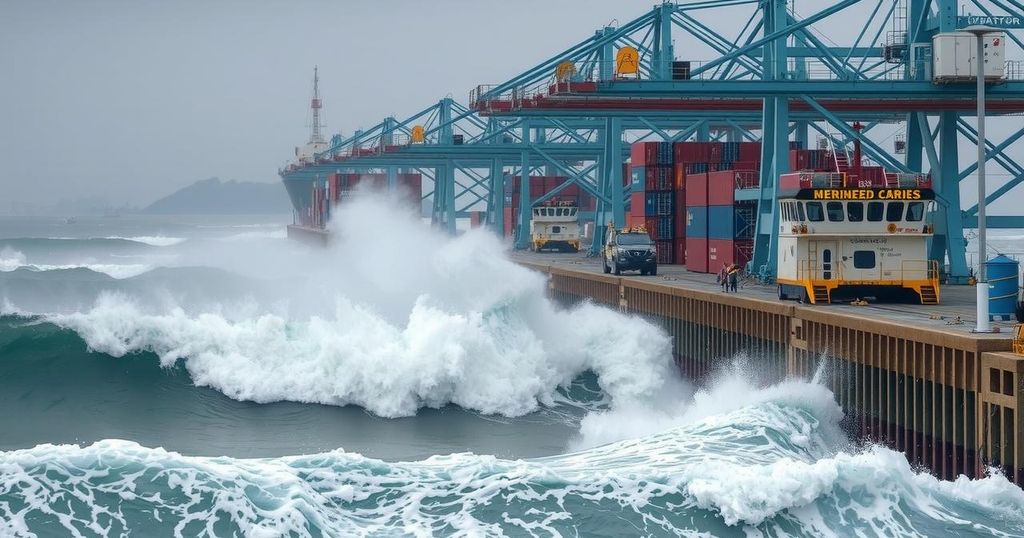Severe high waves in Peru and Ecuador have led to major coastal destruction since Christmas Day, peaking on December 27-28. Reports indicate waves reached 13 feet, closing many seaports and impacting fishing communities. Climate change is cited as a key factor in this phenomenon, with ongoing rescue operations for stranded fishermen. Ecuador has confirmed two fatalities, while Peru has yet to report any deaths.
The coastal regions of Peru and Ecuador are facing significant challenges due to unusually high waves that have wreaked havoc along their shorelines. Beginning on Christmas Day and peaking over the weekend of December 27-28, these waves have reportedly reached heights of 13 feet, inundating fishing communities and tourist spots alike. In a proactive response, Peru’s government has closed around 100 of its 121 seaports to safeguard lives and property, with northern Peru being disproportionately affected.
The destructive power of the waves has resulted in dire circumstances for local fishermen, with the Navy rescuing 30 individuals trapped at sea and reports indicating that at least 100 more may still be stranded. Furthermore, an estimated 100 fishing vessels have been lost due to these relentless waves. Navy Captain Enrique Varea issued a cautionary note regarding the potential for the waves to intensify even further. Meteorologists anticipate a gradual subsiding of the wave height around January 1, yet they project continuing disruptions until at least January 4.
Officials attribute these severe conditions to climate change, citing a combination of powerful winds originating from as far away as the United States and unusually high tides. They have rejected claims of this being a tsunami, labeling it as an ongoing weather pattern instead. Additionally, as global temperatures rise, officials expect more such extreme weather events in the future.
Amidst these natural challenges, Peru recently declared an environmental emergency following an oil spill that affected significant areas of coastal water, with ramifications for local wildlife and beaches. The holiday season, typically marked by increased tourism, has been marred by the destructive waves, leading to business closures at popular resorts. As of now, while Ecuador has confirmed two fatalities linked to the waves, Peru has yet to verify any deaths.
The recent events along the coasts of Peru and Ecuador reflect a concerning trend associated with natural disasters exacerbated by climate change. Extreme weather phenomena, such as unusually high waves, present significant risks to both local communities and economies that rely heavily on maritime activities. Studies link rising global temperatures not only to intensified storms and tides but also to increasing incidents of environmental disasters like oil spills that threaten marine life and coastal ecosystems. Understanding these dynamics is essential for comprehending the ongoing challenges faced by these nations.
In conclusion, the coastal regions of Peru and Ecuador are currently experiencing a severe weather phenomenon characterized by significantly elevated wave heights, leading to destruction, loss of property, and endangering lives. Governmental action has been swift, with mass port closures and rescue operations ongoing. The broader implications of climate change are increasingly apparent, necessitating heightened awareness and preventive measures in these vulnerable coastal communities. The situation demands careful monitoring as the forecast predicts continued challenges in the coming days.
Original Source: maritime-executive.com






